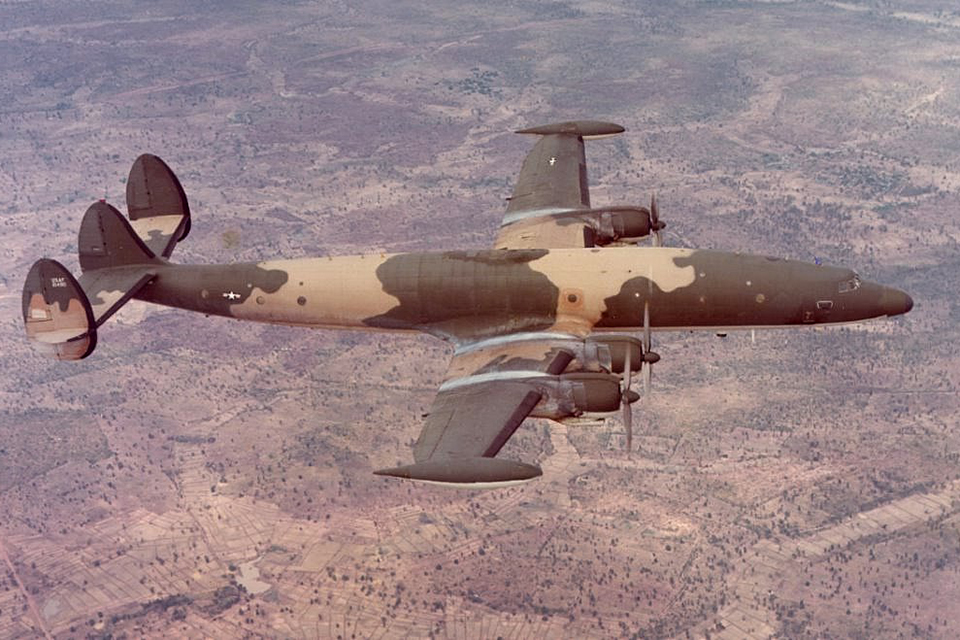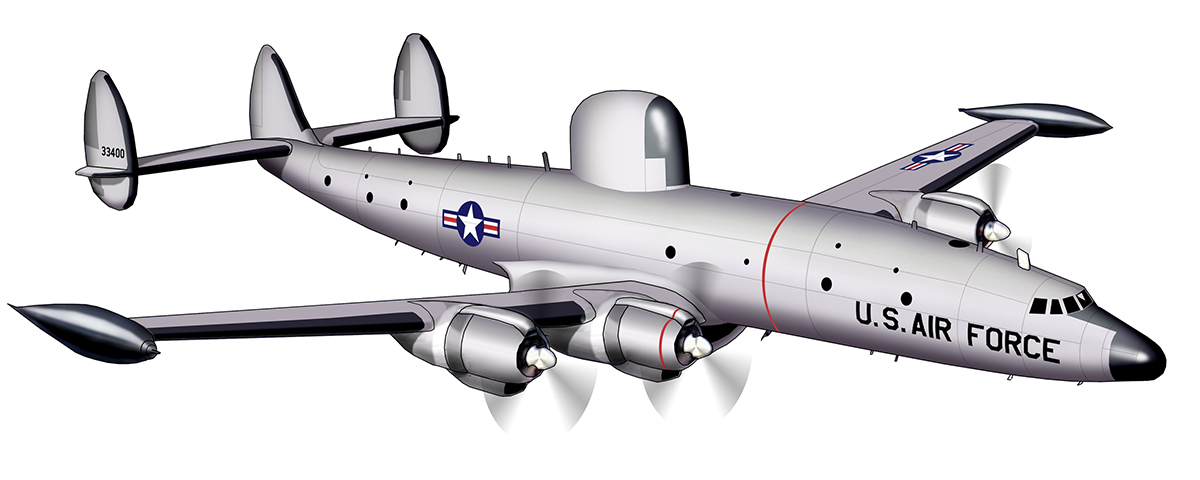Based on the Lockheed L-1049 Super Constellation airliner, the EC-121 Warning Star carried the long-range and height-finding radars required to provide coverage and warning to U.S. aircraft operating over North Vietnam. The EC-121s initiated operations out of Tan Son Nhut Airport on April 16, 1965. Their value became apparent less than three months later, when an EC-121D vectored a USAF F-4 into position against a MiG-21 on July 10. Staging out of Da Nang, U.S. Navy EC-121Ks operated in the northern South China Sea, supplementing Seventh Fleet’s positive identification radar advisory zone ship and carrier-based AEW radar coverage, and providing electronic and communications intelligence support.
The Warning Star entered production as Navy WV-2 “Willie Victors” in March 1954, and as Air Force RC-121s shortly thereafter. Both services had operational squadrons by May 1955. All the Warning Stars were re-designated EC-121s in 1962. Other versions employed in Vietnam included the EC-121R “Bat Cats” that briefly monitored sensor fields on the Ho Chi Minh Trail and operated as communications relay aircraft.

The last EC-121 models were delivered in 1958, and the majority to serve in Indochina were former Navy aircraft that had been turned over to the Air Force. Previously used to conduct “radar barrier” patrols to warn against Soviet strategic bombers flying across the northern Atlantic and Pacific oceans, the planes were being retired when their services suddenly were required in Indochina. Spare parts were always a problem, and the air conditioning often proved insufficient. However, the EC-121 saw almost constant improvement during the war as microminiaturization, computer and communications technologies evolved.
Early EC-121s had difficulty tracking low-flying enemy aircraft, but the EC-121K “Rivet Top” that entered service in June 1967 solved that problem with equipment that could interrogate North Vietnam’s Soviet-made IFF transponders.
The latest EC-121 variants with communications monitoring stations, digital data link equipment and automated tracking support systems began to enter the theater in 1971. Some even carried jamming equipment. Many historians consider this final Warning Star model to be the immediate precursor to today’s Airborne Warning and Control System (AWACS) aircraft. It could conduct air space management and air intercept control, warn of SAM activity and provide direct SIGINT support to strike packages as well as airborne early warning. The last USAF EC-121s were withdrawn from Indochina on August 15, 1973.
Wingspan: 126 ft. 2 in.
Length: 116 Ft. 2 in.
Height: 26 ft. 11.6 in.
Weight: 145,000 lbs
Crew: 26-33
Power: 4 Wright 3350-42
Top speed/cruising: 121 mph/212 mph
Max range: 4,046 nautical miles
Originally published in the April 2011 issue of Vietnam magazine. Subscribe here!





